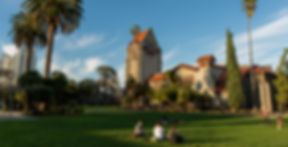

Endothelialization of Coronary Artery Bypass Graft to Study Neointimal Hyperplasia
Christian Catano - Biomedical Engineering Department, SJSU;
Ramzi Abu Manneh - Biomedical Engineering Department, SJSU; Romina Iranmanesh - Biomedical Engineering Department, SJSU
Dr. Patrick Jurney
Technical Advisor:
Heart disease is the leading cause of death in the United States with Coronary Artery Disease (CAD) accounting for 610,000 deaths annually1. CAD is classified as the buildup of plaque in the coronary arteries that obstructs blood flow to the heart. Coronary Artery Bypass Graft (CABG) surgery is necessary for patients with acute stenosis in the coronary arteries, involving the introduction of a foreign artery to bypass blockages in the native artery. Despite advancements, CABG failure remains predominantly attributed to Neointimal Hyperplasia (NH), characterized by the uncontrolled proliferation and migration of vascular smooth muscle cells (VSMCs) due to endothelial cell (EC) failure, leading to intimal thickening and arterial obstruction2. The angle at which the anastomosis is placed is critical, as some angles can alter blood flow and exacerbate NH formation, affecting the ECs' ability to regulate VSMCs. The current project aims to address this issue by creating an in-vitro and in-silico CABG model to study the effect of different angles of anastomosis (AoA) on NH. 3D-printed resin grafts with different AoAs and seeded with ECs will be fit into an in-vitro bioreactor which simulates coronary artery blood flows. Data collected from the in-vitro model will be further analyzed using an in-silico model in COMSOL to determine the different shear stresses that the ECs experience. The platform should allow researchers and surgeons to minimize NH formation by determining the optimal AoA for CABG surgery in patients.